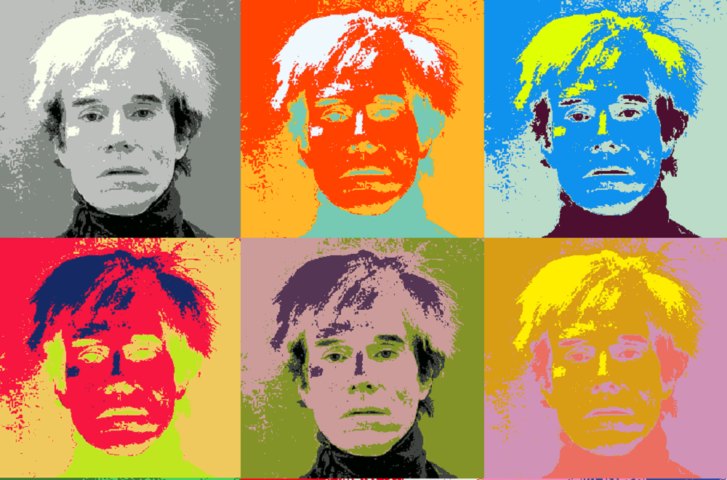Warhol – el atre mecánico. 1st Feb – 6th May 2018 Caixaforum Madrid.
I f Andy Warhol had intended that the public interaction with this exhibition should be an installation of performance art in itself, he would have been proud.
My knowledge of Warhol’s work doesn’t go much beyond the prints of consumer goods, famous people and of course the Velvet Underground album with his banana on the cover. Nonetheless, his work is iconic and with an exhibition just down the road, I went.
Choosing a Sunday morning to visit may have chimed with the opening track of the Velvet Underground album but it did also with a large number of other visitors who had decided on the same moment to visit. Waiting outside in the cold gave me time to imagine inside would be a little busy, not to mention warmer, and I wasn’t mistaken. On entering the building and taking the stairs up to the floor housing the exhibition, I soon found myself in another queue and could see this was going to require patience. The layout of the exhibition was odd and led to a few bottlenecks and some weaving. The first room was quite small and crowded and meant shuffling through at a snail’s pace which at least provided ample time to read the descriptions by each piece.
The following room was larger and the focus was the Marilyn Monroe prints which are nearly as ubiquitous as t-shirts bearing the photograph of Che Guevara. These images are pleasantly familiar but it would be difficult to tell any difference between them and those widely available in art shops around the world. Grouped together some 3 meters from the pyramid display of Marilyn prints were visitors eagerly awaiting their turn to stand before this collection of mass produced artwork to take a selfie. A selfie of themselves and mass produced prints possibly destined for Facebook or Instagram; I began thinking of infinity mirrors. Negotiating my way past this I spent a bit of time among the Campbell’s soup prints, the boxes of Brillo soap pads, Coca-Cola, Jackie Onassis and Liz Taylor before turning into another room. This was probably the least inviting part of the exhibition. Various bits of memorabilia had been placed in glass cases down the middle without leaving room to turn at the end and see the other side. This called for some deft footwork to exit before doing it all over again.
Crossing the narrow intersection funnelling visitors through a bottlenecked crossroad to the room opposite was another feat. Here there were videos showing screen tests on a loop and despite their availability on YouTube, they didn’t escape the attention of phone wielding art lovers who wanted their own film of a film. On the ceiling was a silver, pillow shaped balloon which, if an original from Warhol’s time would be impressive for its longevity compared to most balloons, but might have clashed with the idea of mass produced consumerism. It held my interest but not in the way of a Goya or Caravaggio who magnetise with their uniqueness; rather in the lack of it and that intention.
The rest of the exhibition was fairly open and showed larger prints of Chairman Mao, a revolver and other familiar Warhol images. Each yielded a sentiment similar to hearing a classic track after a long time; more ‘ah’ than ‘ooh’. A bit like hearing someone else’s copy of an album one also has at home.
However, there was one room which seemed to stump the public. It was a darkened space in which Velvet Underground tracks played as films were projected onto the walls showing Warhol parties of the time. Pausing just to look for a moment people flowed in and out. How does one take a bit of that home?
“A Coke is a Coke, and no amount of money can get you a better Coke.”
Warhol’s take on mass produced consumerism may be lost on today’s photo taking public who seem intent on getting their own personal Coke, Marilyn and so forth. Given that a large part of the exhibition is available to buy with little or no difference to the original, the phone camera has added a touch of the “I was ‘ere” and perhaps Warhol would have appreciated it.
The difference in feeling between entering and leaving an exhibition is the unquantifiable we carry away with us back into our own consumerist experience.
After this exhibition, that difference felt fainter than ever.







The truth is that although at the beginning I certainly called attention after reading it I think not much. I do not see myself explaining to my children the meaning of their work …
good job!
see you